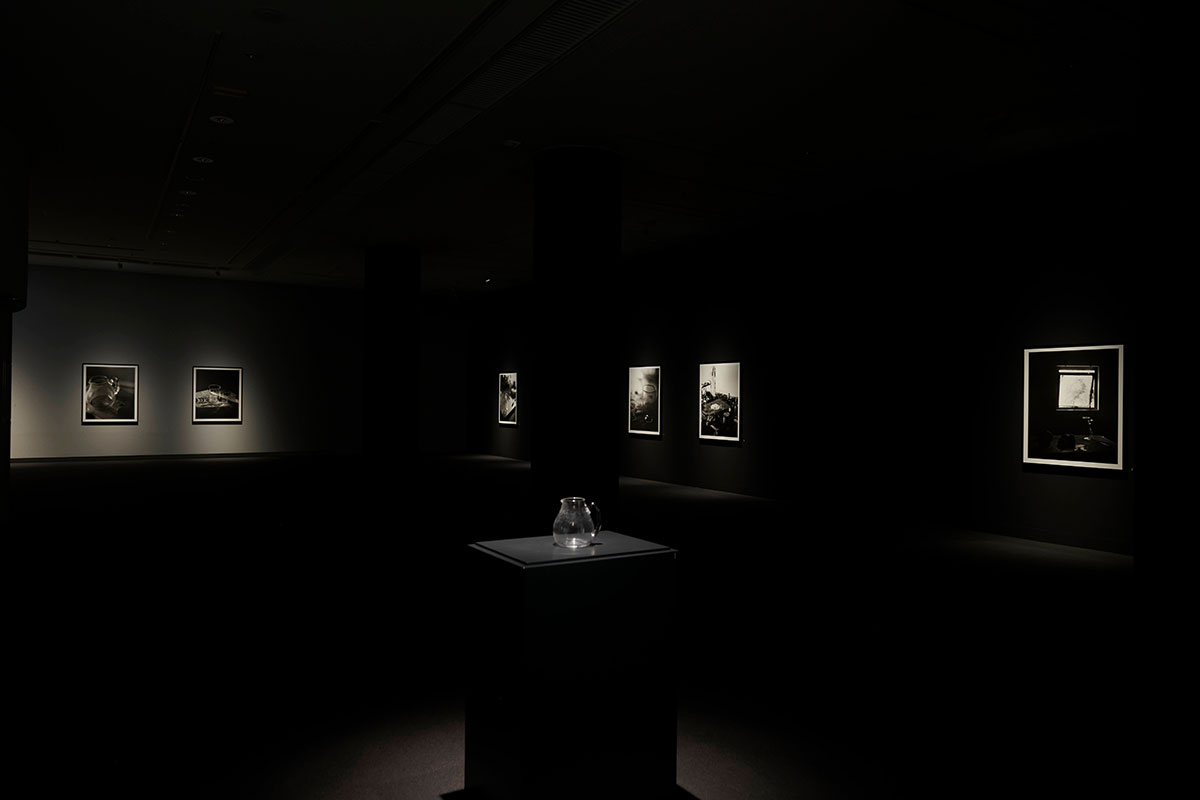Highlights
1. Glass artist Yoko Andersson Yamano
Attracted to glass, and with a particular interest in the mass-produced craft of glass tableware, Yamano studied glassblowing techniques at Kosta Boda Glass Blowing School, within the oldest glassworks in Scandinavia. SwedenŌĆÖs flourishing glass industry still persists with the techniques of small-scale handcrafted production that have been in use since the seventeenth century, and which require considerable time and effort. The fact that they are individually handcrafted means that even the same items all differ very slightly from each other, just as every individual person is different, says Yamano. A modicum of individuality, such as a slight twist or a very minor difference in how easy it is to use, gradually grows on the user and sets them thinking about their relationship with tableware.

2020
photo: Takahashi Kenji
2. Thinking about how glass, photographs and paintings are related
At the exhibition venue, clear glass tableware that would not be out of place in everyday life is juxtaposed with paintings that show these glass painted items in a wide variety of ways, and with photographs of the glassware taken in the artistŌĆÖs studio. Imagining how each piece would feel to use as a utensil in real life at the same time as viewing it as a work of art may enable visitors to switch back and forth between art appreciation and (imaginary) real life use, blurring the boundaries between art and utensils, appreciation and use, gallery and home, and fiction and reality. The relationships created will not only transcend the genre of the artworks but themselves go on to involve the viewer, crafting a new form of relationship.
3. A different display configuration and spatial presentation in each venue
Each venue for the exhibition has the display configured in a different way. Each of the curators has made their own interpretation of the Glass Tableware in Still Life Project and will choose and arrange the works based on a concept suitable for their galleries. For example, in Hiroshima, the first venue, the glass, paintings and photographs are each shown separately as their own genres of work, with their display configured in such a way as to invite visitors to imagine the relationships between different artworks, different artists and different genres. In Tokyo, the second venue, the spotlight is placed on the dialogue between Yamano and these eighteen highly individual artists and the glass tableware is considered in conjunction with the engagement and stories generated by their interactions.
Scenography Cooperation: Ito Satoru (Satoru Ito Architects and Associates)

photo: Sambe Masahiro




